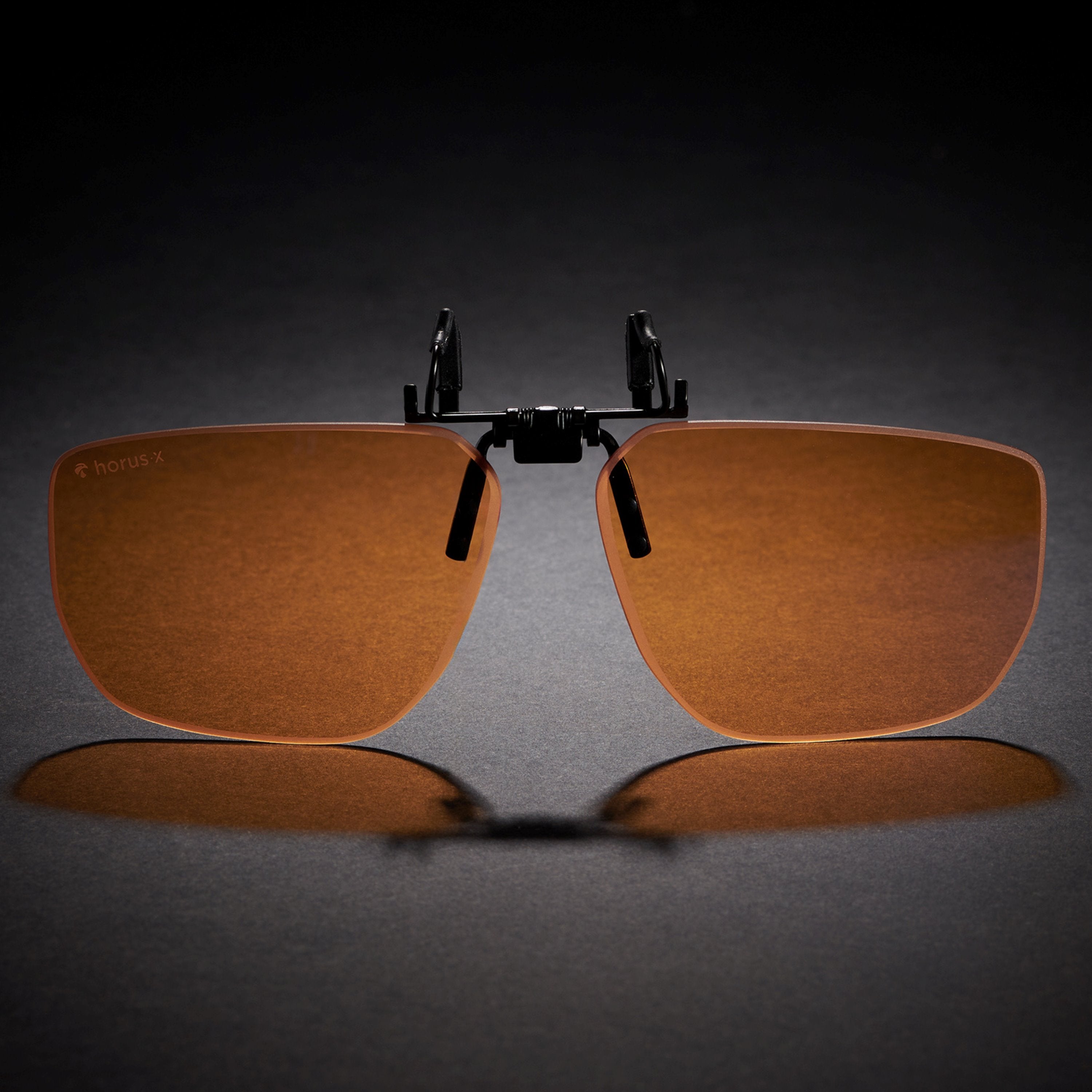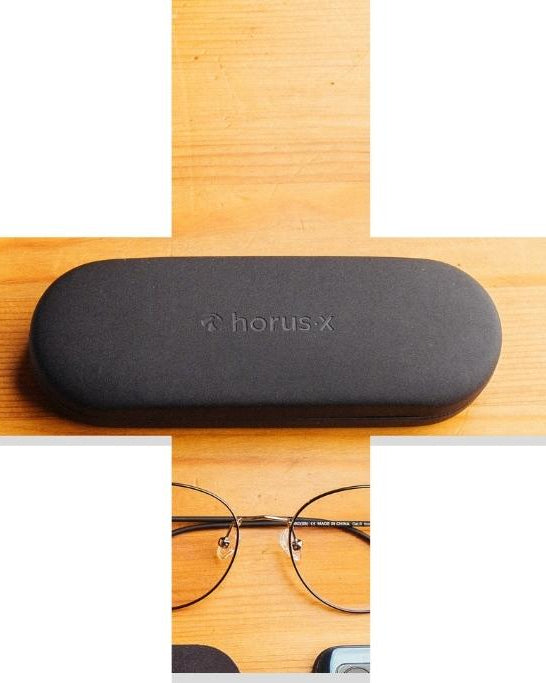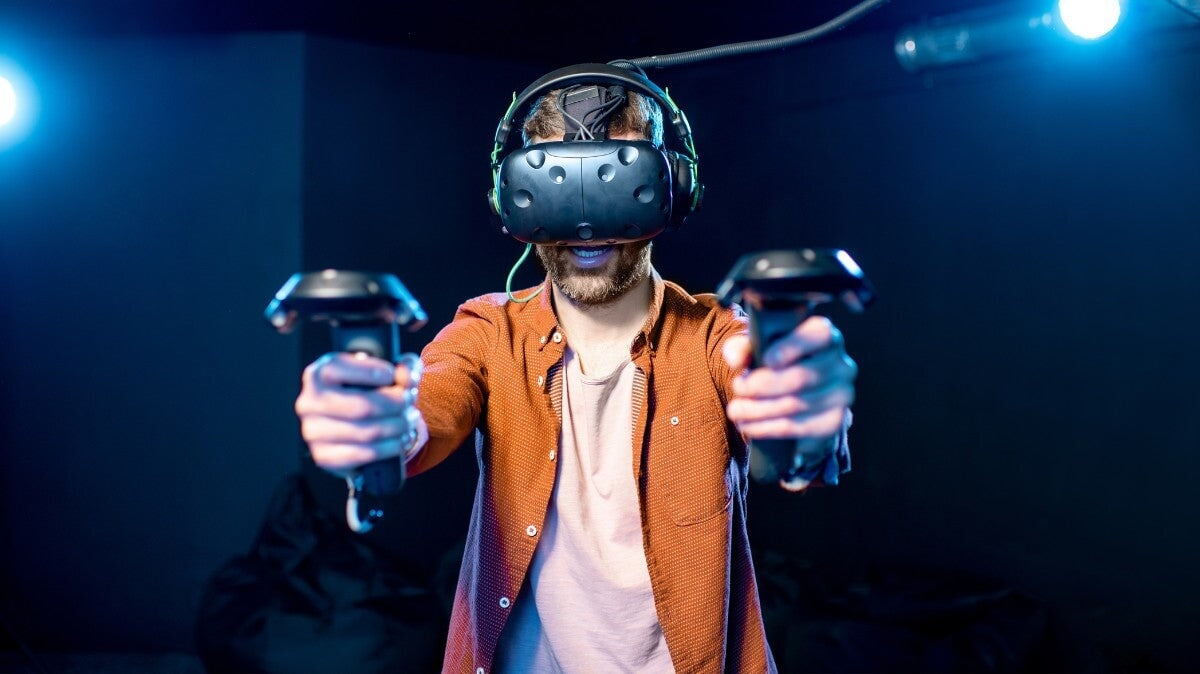You've probably seen your favorite streamer or esport champion wearing blue light blocking gaming glasses. And while they can look badass, they are not just for fun; they offer essential protection.
This article will focus on the technical (but fun) side of things. by helping you choose the right tint for your glasses.
Essentially, the distinction comes down to the level of protection you need, but there's more to it.
So, should you opt for clear gaming glasses or yellow gaming glasses? What is the difference, and how should you pick? This article, "Gaming Glasses Clear vs Yellow," can help you find the solution that works for you on what type of gaming glasses lens to choose. Let's check it out
Choosing Gaming Glasses: Clear vs Yellow
Whether you're a casual or die-hard gamer, a pair of blue light blocking gaming glasses can help you avoid painful eye conditions while you enjoy a long gameplay. Gaming eyewear will help with:
- Visual comfort
- Endurance
- Long term protection
- Performance
They act as a shield against the aggressive blue light from your screens and your setup environment (UV, blue light, reflection and glare...).
Whatever lens color you choose, the principle is that you'll get some level of protection (highly correlated to the color of the lens).
There are generally two famous kinds of lenses for gaming glasses: clear lenses and yellow lenses and really any tint in between. As a general rule of thumb, the darker the lens, the better the protection.
You'll have to make your lens decisions based on the amount of time you spend gaming (i.e., if you're a heavy or light gamer), how sensitive you are to blue light and/or light in general, the amount of contrast or depth you need, and how important color accuracy is to you.

Let's take a look at clear gaming glasses and yellow gaming glasses, covering some of the similarities and differences between them.
Clear lens Gaming Glasses
Clear lenses are ideal for most casual gamers as they offer :
- A moderate filtration for normal screen use with UV protection + up to 50% blue light protection + anti glare.
- A perfect rendering of colors for an unaltered gaming experience
- A more casual and discrete look, easier to wear throughout the day
Clear lenses are practically colorless. They may have a very slight yellow tint but mostly imperceptible to the human eye. They can block up to 50% of harmful rays between 380 nm-450 nm, which is a great option if you're only mildly bothered by blue light. They block enough harmful blue light to improve sleep quality and prevent damage to the eyes.
Clear lenses are ideal during daytime and in brightly-lit conditions. Because they allow more light to pass through, they provide more contrast and depth perception.
Here is a great example of serious clear gaming glasses :

Yellow lens (or Amber tint) glasses
Darker yellow glasses are ideal for more intense gaming sessions or simply for more sensitive eyes.
- A powerful filtration for intense screen use with UV protection + up to 90% blue light protection + anti glare
- Longer gaming session
- A more distinct look
- Enhanced contrast in low light situations
The yellow or amber lenses can block up to 90% of harmful rays between 380 nm-450 nm. Usually, the more harmful rays they block, the darker the tint of yellow.
Yellow lenses are optimal, especially if you're an intense gamer and play for extended periods of time.
Yellow-tinted lenses look cooler than clear lenses and give you that "gamer" look that makes you feel like a boss when it's time to frag your enemies.
Check out this good example of yellow tinted gaming glasses :

Note: Yellow gaming glasses can make it difficult to differentiate between colors such as red and black or blue and green, resulting in color distortion. So, some gamers prefer clear lenses over yellow ones because clear lenses give better color accuracy.
Is it better to play video games with clear or yellow gaming glasses?
When we're talking about whether one lens color is better than another, we're really talking about whether one lens color is better for YOUR EYES (and your needs). Because everybody has different eyes!
So, the short answer is this: it depends on what kind of game you're playing, what time of day you're gaming, and most importantly, on your eyes.
The clear gaming glasses give you the best authentic experience with true colors. But if you can't play this way because you have a massive headache, then the yellow or amber gaming glasses may be better.

If your room is dimly lit or you love gaming at night, a yellow or amber lens may be more appropriate for your gaming needs. And if you play more during the daytime or in a bright environment, the clear lenses may be the best fit.
But ideally, you may want to get both and alternate during daytime and nighttime to see which works best for you at different times of the day.
How do you choose a good gaming lens?
Whether you're going for clear or yellow/amber gaming eyewear, there are a couple things you can check to insure the best quality of the lens you're looking to buy.
You want to make sure that you are not just buying ordinary lenses.
Materials
Should you choose gaming lenses made of polycarbonate or CR-39? It depends on your eye needs.
But polycarbonate is considered the best choice of lens material for safety glasses and for children.
It has high impact resistance, an index of refraction of 1.586, and a specific gravity of 1.20. This allows polycarbonate lenses to be lighter, thinner, and much more resistant to impact than CR-39. Convenient if you want to headbutt your siblings disturbing your game.
Filtration and Coatings
We have covered this quite extensively but make sure to choose glasses that target blue light between 380 and 450 nanometers.
That is the most intense part of blue light! Double-check that info as it is the most important filtration indicator for your gaming glasses. Reducing blue light exposure is critical for long and healthy gaming sessions.
Add to that an anti reflective coating and you have got yourself a very serious gaming lens.
Certifications
Some of these qualities can't be seen physically and can only be verified through specific certifications of the manufacturer or sellers.
Before you add your gaming glasses to your shopping cart, check to see if the glasses have been certified by the appropriate authority in your country (e.g., ANSI in the US and CE certification in Europe). It should also be tested and certified by an independent lab, don’t hesitate to ask, this will make a big difference in your choice to see which company is really serious.
Why Do You Need Gaming Glasses [Quick recap]
When it comes to gaming, you want to be able to see everything clearly for a long period of time. Your gaming glasses can make the difference between life and death when you're facing your opponent in a game of Counter-Strike. You don't want to be squinting like a bag of nails when your opponent is in a killing spree, ballin´ out of control.
It's easy to spend hours on end immersed in your favorite video game. Sadly, spending long hours staring at a computer monitor can lead to digital eye strain fancily called "computer vision syndrome" (CVS), with symptoms like eye strain, blurred vision, dry eyes, and headaches that can last for days. And let us not forget potential long lasting effects that more and more studies are highlighting. What is causing CVS you ask ?
Ultraviolet light
Ultraviolet light is one part of the invisible light spectrum. It has a shorter wavelength, which means it has more energy than most other known parts of the non-visible spectrum of light. Although research has shown that modern screens emit little to no UV light, you can still be exposed while playing in a non optimal environment with direct sun exposure. An accumulation of UV is dangerous to the eyes, even in low doses. (The parts most affected are the cornea and the lens by the way).
Blue light
Blue light is a part of the visible light spectrum that has a big impact on our eyes and our bodies. On the lower end of its spectrum, it is close to UV light with a very short and intense wavelength, so it also has more energy than other parts of the visible light spectrum. Most digital devices, like computers, TVs, and LED lights, emit blue light thus putting heavy strain on our eyes and on our circadian rhythm (think sleep balance).
Reminder: not all blue light is bad. For example, you need some blue light during the daytime so you can remain alert and also sleep well at night.
Glare
Glares are a form of visual noise. By definition, it is the loss of visual perception caused by an uncomfortable bright light source, more than the eyes can absorb. Gazing at your digital screen for long hours could cause a screen glare.
Long and constant gaming without a pair of glasses could cause:
- Irritated eyes
- Distorted vision
- Eye fatigue
- Red eyes
- Migraines or headaches
- Inadequate sleep quantity and quality
- Difficulty reading and seeing fine details
Gaming eyewear generally have anti reflective lenses and are tinted in order to reduce the glare caused by indoor lighting. These glasses work by filtering out the blue light emitted by digital screens, which has been shown to disrupt sleep cycles and cause eye strain.
Final thought on Gaming glasses Clear VS Yellow tint
Hard-core gamers who do not wear blue light blocking gaming glasses are no different from deep-sea divers who do not wear oxygen masks! (yes we went there).
If you're ready to level up your game, you should get a pair of the best gaming glasses.
If you've been previously confused by the clear vs yellow debate, we hope we've been able to make this clear for you (and not yellow). Do you want to improve your performance in low-light or nighttime situations, or are you very sensitive to blue light? Yellow tinted glasses can help. If you game lightly or in well-lit environments, or if you're not so sensitive to blue light, clear lenses are great! Oh and if you are looking for intense blue light blocking outdoors, blue light sunglasses also exist!
















